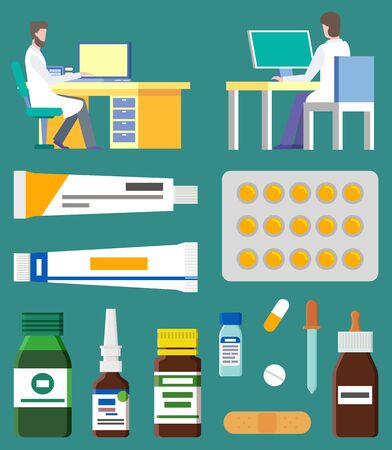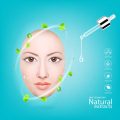What Is Acne and Why Does It Happen?
If you’ve ever looked in the mirror and wondered, “Why me?” after spotting a new pimple, you’re definitely not alone. Acne is one of those universal skin struggles that can pop up for teens and adults alike—seriously, nobody is immune! But what exactly is acne? Simply put, acne happens when your hair follicles get clogged with oil (sebum), dead skin cells, and sometimes bacteria. This mix causes those familiar bumps, blackheads, whiteheads, or even deeper cystic pimples that can feel painful and stubborn. Blame it on hormones, stress, genetics, or even certain foods—there’s no single cause, which is why it feels like everyone battles breakouts at some point. Understanding why acne shows up is the first step toward finding the right treatment and getting back to clear, healthy skin. In this article, we’ll break down the different types of acne and explore what really works to treat them—so you can stop feeling frustrated and start seeing results.
Common Types of Acne: Know Your Breakouts
When it comes to acne, not all breakouts are created equal. Understanding what’s happening on your skin is the first step to treating it effectively—and trust me, knowing exactly what kind of pimple you’re dealing with can make a huge difference in how you handle it. Below is a straightforward breakdown of the most common types of acne, along with real-life examples so you can spot them easily.
| Type | What It Looks Like | How to Spot It | Real-Life Example |
|---|---|---|---|
| Blackheads (Open Comedones) | Small, dark bumps on the skin’s surface | Pores look “clogged” but flat; no swelling | Tiny black dots on your nose or chin that don’t hurt when you touch them |
| Whiteheads (Closed Comedones) | Small, white or flesh-colored bumps | Slightly raised, smooth, and round; not inflamed | Lumps under your skin that you notice when washing your face but rarely see redness |
| Papules | Small, red, inflamed bumps | No visible pus; often tender or sore to the touch | The classic “angry” pimple that pops up before an important event |
| Pustules | Red pimples with a white or yellow center (pus-filled) | Soft top; surrounded by red skin; may pop if squeezed (not recommended!) | The “whitehead” people try to squeeze—usually after a stressful day at work or school |
| Nodules | Large, hard, painful lumps deep under the skin | No visible head; feels like a knot; takes weeks to heal | A throbbing lump on your jawline that never seems to come to the surface |
| Cysts | Large, soft, pus-filled lumps beneath the skin’s surface | Red, swollen, very tender; more likely to scar if picked at | The deep, painful breakout that makes you want to call in sick or cancel plans—it can linger for weeks! |
If you’ve ever stared into the mirror and wondered why some pimples seem easy to treat while others feel impossible to hide or heal, this guide should help. Each acne type behaves differently and needs its own treatment approach—which we’ll dive into next. For now, take a moment to identify which types show up most often on your skin. That simple awareness can be a game-changer in choosing the right products and treatments later on.

3. Myth Busting: What Doesn’t Cause Acne
When it comes to acne, a lot of us have heard the same tired advice: “Stop eating chocolate,” or “Lay off the fries.” But here’s the truth from a real-world American perspective—these classic culprits aren’t actually at the root of your breakouts. It’s time to separate fact from fiction and bust some myths that just don’t hold up under scrutiny.
Despite what you might hear in casual conversations or see on social media, scientific research doesn’t support the idea that greasy foods or sweets directly cause acne. Sure, eating tons of fast food isn’t great for your overall health, but if you’re breaking out after pizza night, chances are there’s more going on beneath the surface than just what’s on your plate.
Other common misconceptions? Many people blame poor hygiene or not washing their face enough for their acne. In reality, over-washing or using harsh scrubs can actually irritate your skin and make things worse. Acne is much more about your skin type, genetics, hormones, and sometimes stress—things you can’t just scrub away. So next time someone tries to give you that old-school advice, you can confidently set the record straight: acne is complicated, and it’s not simply about what you eat or how often you wash your face.
4. OTC Treatments: What Works and Why
When it comes to tackling acne, most of us start at the drugstore. Over-the-counter (OTC) options are accessible, affordable, and widely recommended for mild to moderate breakouts. But with so many products lining the shelves, it can get overwhelming fast. Lets break down the three heavy-hitters—benzoyl peroxide, salicylic acid, and retinoids—so you know what to expect before you buy.
| Ingredient | How It Works | Best For | What to Expect |
|---|---|---|---|
| Benzoyl Peroxide | Kills acne-causing bacteria and helps clear clogged pores. | Inflamed pimples (red bumps or pus-filled spots) | Can see improvement in 2-4 weeks; may cause dryness or irritation at first. |
| Salicylic Acid | Exfoliates inside pores to prevent clogs and reduce swelling. | Blackheads, whiteheads, and overall rough texture | Smoother skin in 4-6 weeks; usually gentle but can cause mild stinging or peeling. |
| Retinoids (Adapalene) | Speeds up cell turnover, keeping pores clear and reducing inflammation. | Persistent acne and preventing new breakouts | Visible results after 8-12 weeks; initial dryness or flaking is common. |
Real Talk: These ingredients really can make a difference—but consistency is key. Most people don’t see overnight miracles (despite what some packaging promises). Expect gradual progress over several weeks. Also, be prepared for some mild irritation as your skin adjusts—especially with retinoids. If you’re shopping in the U.S., look for familiar brands like Neutrogena, Clean & Clear, Differin (for adapalene), or CeraVe. And one more thing: always pair these treatments with a basic moisturizer and sunscreen during the day, since many acne meds make your skin extra sensitive. Bottom line: drugstore options work for lots of people if you give them time and use them consistently—but patience is everything!
5. Prescription Options for Stubborn Acne
Let’s be real: sometimes no matter how many drugstore creams and spot treatments you try, your acne just won’t quit. If you’re feeling frustrated with over-the-counter stuff that just isn’t cutting it, you’re definitely not alone. This is where seeing a dermatologist can make all the difference—because they have access to prescription-strength treatments that target even the most stubborn breakouts.
Topical Retinoids: The Gold Standard
If you’ve never heard of retinoids, get ready—they’re a game-changer for many people dealing with persistent acne. These vitamin A derivatives work by speeding up cell turnover and preventing clogged pores. Dermatologists often prescribe tretinoin or adapalene (which is now also available in a lower strength over-the-counter). Yes, they can be drying at first, but when used as directed, they can really clear up skin texture and keep new pimples from forming.
Oral Antibiotics: For When Topicals Aren’t Enough
If your breakouts are inflamed or deep under the skin, your doctor might recommend oral antibiotics like doxycycline or minocycline. These meds help reduce bacteria and inflammation from the inside out. It’s usually not a forever fix—most dermatologists prescribe them for a few months while you start a longer-term topical routine—but they can really calm things down when nothing else will touch it.
Accutane (Isotretinoin): The Heavy Hitter
Accutane has kind of a legendary reputation—and for good reason. It’s prescribed for severe or cystic acne that hasn’t responded to other treatments. While it comes with some serious side effects (think dry lips, possible mood changes, and strict rules about pregnancy), it can offer life-changing results for people who have tried everything else without success. If you’re considering Accutane, expect regular doctor visits and blood tests to monitor your health along the way.
Bottom Line: Don’t Be Afraid to Ask for Help
If your acne feels out of control and drugstore options aren’t working, talking to a dermatologist isn’t “giving up”—it’s taking charge of your skin health. Prescription treatments aren’t magic overnight fixes, but they’re often what finally gets stubborn acne under control for good.
6. Pro Tips: Building a Skin-Care Routine That Works
Lets get real—treating acne isnt about throwing every trendy product at your face and hoping for a miracle. Its about building a skin-care routine that actually works with your skin, not against it. Start simple: gentle cleansing is your friend. Skip the harsh scrubs and drying cleansers; instead, use a mild, fragrance-free face wash morning and night. Over-cleansing can strip your skins natural barrier and make acne worse.
Next up, don’t skip moisturizer. Even oily or acne-prone skin needs hydration—just make sure you’re choosing an oil-free, non-comedogenic (won’t clog pores) option. This keeps your skin balanced and less likely to overproduce oil.
If you’re using any topical acne treatments (think benzoyl peroxide, salicylic acid, or retinoids), layer them after cleansing but before moisturizing. And seriously, sunscreen is a must. Acne medications can make your skin more sensitive to sunburn, so opt for a lightweight, non-comedogenic SPF every day—even when it’s cloudy.
Keep It Consistent—But Be Patient
No routine works overnight. Stick with your chosen products for at least 4-6 weeks before expecting major changes. If something burns or causes irritation, scale back or swap it out. Your skin will tell you what it likes if you pay attention.
Less Is More
You don’t need a 10-step routine. Focus on the basics: cleanse, treat, moisturize, protect. That’s it. Adding too many actives or constantly switching products often does more harm than good.
When to See a Pro
If youre not seeing improvement after trying these steps, or if your acne is severe or painful, dont hesitate to book an appointment with a dermatologist. Sometimes prescription treatments are necessary—and that’s totally normal.
Bottom line: A simple, steady approach wins out over hype every time. These practical steps can help keep your skin calm, clear, and healthy—without the guesswork.
7. When to See a Dermatologist
Let’s be real: dealing with acne can feel like an endless cycle of trying new products, hoping for overnight miracles, and scrolling through skincare forums at 2am. But sometimes, despite our best efforts (and emptied wallets), it’s time to admit that DIY solutions just aren’t cutting it. So how do you know when it’s time to call in the pros?
Signs You Need a Specialist’s Help
If your acne is painful, cystic, or leaving scars—even after months of over-the-counter treatments—it’s probably time for a dermatologist. Maybe your breakouts cover large areas (like your back or chest), or they’re messing with your confidence and mental health. Or maybe you’ve tried every influencer-recommended product out there and nothing works. These are all big red flags that you shouldn’t ignore.
Don’t Wait for Things to Get Worse
A lot of us put off seeing a doctor because we think our skin “isn’t that bad,” but early intervention can prevent scarring and long-term issues. Dermatologists have access to prescription treatments and advanced therapies that simply aren’t available at the drugstore—and they can tailor a plan just for you.
Your Confidence Matters
Acne isn’t just about how you look; it can impact how you feel every single day. If you’re skipping social events, dreading photos, or feeling down about your skin, don’t brush those feelings aside. Reaching out for professional help isn’t giving up; it’s taking charge of your health.
So here’s your pep talk: There’s absolutely no shame in asking for help. Taking the step to see a dermatologist could be the game-changer your skin—and self-esteem—needs. You deserve to feel good about yourself, so don’t hesitate to get the support you need!


